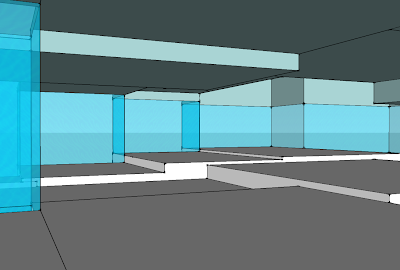I have chosen Tracey Moffatt and Rosalie Gascoigne as my two clients that I will design the studio spaces for. They both have very different artistic practices, which I think will be interesting to try and combine the two into one building. Below is a brief summary of each artist's methods and inspiration, which will help inform my design.
Tracey Moffatt primarily works in the mediums of photography and film; through which she experiments with her chosen subject matter to manipulate the audience to experience her artworks in certain ways.
Her photography and film can range from the theatrical and unrealistic, to the disconcertingly too realistic, depending upon the message she is attempting to communicate. For example, The Movie Star (1985) has an unrealistic and satirical feeling to it; the colours are bright and the composition too perfect, so that the viewer feels like the scene has been staged for the purpose, in this case, of social commentary.
This obvious staging is typical of Moffatt and it can be seen in her films such as Night Cries: A Rural Tragedy (1989), where she has used a narrative scenario shot on an indoor set. This particular film uses manufactured sound to enhance its unrealistic qualities, and create a disparity between the audience and the performance. Moffatt's films continue to play with the relationship the audience has to her artworks in her film Heaven (1997). Through the use a hand-held video camera, Moffatt deliberately manipulates the viewer to feel voyeuristic, as she invasively films surfers at the beach getting changed. The ‘candid camera’ style of footage creates an almost too realistic feeling for the audience, as they know they are viewing something they shouldn't.
This time, rather than creating disparity, Moffatt over involves the audience in her subject matter through her artistic practice.


Stills from Heaven, 1997.
Rosalie Gascoigne is well known for her artistic practice of carefully assembled collections of found materials. She started her artistic career with traditional flower arranging, but later progressed to the stricter Japanese art form Ikebana. From there she began experimenting with arranging scavenged materials such as scrap iron to wooden boxes. As she became more adventurous, Gascoigne moved onto wire, feathers, and what she is most well-known for, yellow reflective road signs.
Gascoigne says that the materials she picks for her art "need to have been open to the weather.". Once she has gathered her materials and she will often store them until she finds a particular use for them. Patiently, she will then place her materials on the floor and will continue to experiment with the composition until she has found the arrangement she is looking for.
Her artworks are open to interpretation, and can often exhibit signs of patterning or else depictions of landscapes, but Gascoigne prefers to leave it up to the viewer to decide.

Wheat Belt, 1989. Sawn/split soft drink crates on plywood. 94 × 277cm.










































